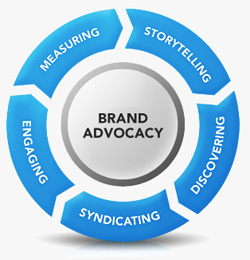Tech Tonics: Griffin Weber – Bringing Clinical Sense & Sensibility to Healthcare Data
Inspired by health technology from the age of five, Griffin Weber has pursued this passion both doggedly and joyfully. Now an associate professor of medicine and bioinformaticist at Harvard, Griffin spends his days doing what he loves, leveraging technology to pragmatically improve the health and the care of patients.
Griffin grew up in Virginia, the son of a mathematics professor and a professional artist. While his parents had left NYC, they retained their affection for the city, which they expressed through life-size renderings that seem lifted from subway stations – see here.
While many – perhaps most – of our guests describe a career of wandering and exploration, Griffin seems to have had a clear sense of what he wanted to do from the time he was five years old when first inspired by the intersection of human health and cutting-edge technology. He was profoundly interested in understanding “how things worked,” and was especially captivated by the Jarvik-7, the first artificial heart implanted in a patient in December 1982.
In college at Harvard, Griffin pursued bioengineering, but over time found himself ever more intrigued by the power of computers and how they might solve the needs of hospitals. He soon wound up engaged in a series of software projects for hospitals, discovered that he really enjoyed this work, and decided that it was to be the focus of his career. Griffin continued his training at Harvard Medical School in the Health Science and Technology (HST) program and sought to pursue a joint MD/PhD with the PhD in computer science. Initially this confused the administration, who viewed this as a strange combination. But in the end, they promised to support Griffin if he was accepted to the computer science PhD program – which, of course, he was.
It sounds like this worked out pretty well – Griffin was pursuing the joint degree and found his way to a staggering number of high-profile early digital projects which included everything from the management of patient-related information for hospitals to digitizing medical school course information for his colleagues. As he neared the end of medical school, wondering what he might do next, he received an offer he couldn’t refuse. If he was willing to forgo additional medical training (such as an internship, residency, etc.), he was told, he could instead go directly to a faculty position at Harvard Medical School, set up a research lab, and also serve as CTO for the medical school. He said yes.
Quickly, Griffin became immersed in a range of interesting projects and collaborations with a particular focus on the challenges associated with extracting useful information from the electronic health record (EHR). Griffin emphasizes that the EHR is fundamentally a record of physicians and other providers interacting with a patient – rather than a comprehensive record of the patients themselves. This can lead, he says, to “weird biases and misunderstandings” – especially when EHR data is analyzed without the relevant contextual understanding of the practice of medicine, including potentially idiosyncrasies associated with the specific care environment.
Griffin has also found a way to cultivate his artistic side through his work, in his data visualizations. For example, this paper, describing the “Triangle of Biomedicine” presents a graphical depiction of how innovations in basic science translate over time to impact clinical medicine, and this paper, offering the “Tapestry of Big Biomedical Data,” a now-famous illustration showing the relationship between different sources of information about a patient’s health. Notably, Griffin’s interest in data visualization places him in distinguished company – including Florence Nightingale, as David recently discussed in his latest Wall Street Journal book review for Tim Harford’s The Data Detective.
We are inspired by all Griffin has done and continues to do at the frontier of technology and health, and we welcome him to Tech Tonics!
This episode of Tech Tonics is sponsored by Manatt Health. Manatt Health integrates strategic business consulting, public policy acumen, legal excellence and deep analytics capabilities to better serve the complex needs of clients across America’s healthcare system. Together with it’s parent company, Manatt, Phelps & Phillips, the firm’s multidisciplinary team is dedicated to helping its clients across all industries grow and prosper.
Show Notes:
David has written about the challenge of extracting EHR data HERE and HERE.
Posted in:
Audio Podcast, Healthcare, Tech Tonics


